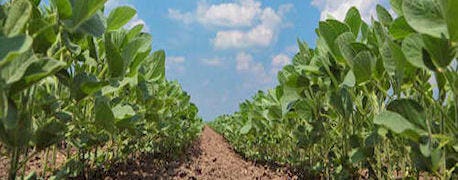November 22, 2013

A report released Thursday by the group CropLife America finds that more than 40% of U.S. agricultural commodity exports - including soybeans, grains, tree nuts, fruits and groundnuts - could be blocked by upcoming changes in the European Union Plant Protection Regulation.
The blockages could cost Americans $4 billion in exports to the EU, in addition to exports of crop protection active ingredients. Such actions would imperil the Transatlantic Trade and Investment Partnership, CLA said.

Hazard-based bans could impact 40% of U.S. ag exports
The findings are part of the report, "Potential Trade Effects on U.S. Agricultural Exports of European Union Regulations on Endocrine Disruptors," which was commissioned by CLA and authored by Kyd D. Brenner, senior consultant at Washington, D.C.-based firm DTB Associates LLP.
The EU regulation, 1107/2009, diverges from the U.S. Environmental Protection Agency's regulatory approach, which uses science-based risk assessment procedures for regulating crop protection products, CLA says.
The group says EU's increasing dependence on hazard identification without accounting for exposure or risk departs from not only the EPA's science-based process, but also the internationally accepted World Trade Organization practice for regulating crop protection products – the Sanitary and Phytosanitary Agreement. The EU is a signatory to that agreement.
If the regulation is approved, CLA explains that U.S. agricultural exports containing trace amounts of approved crop protection products will be blocked because Maximum Residue Levels for food and feed treated with these crop protection products will default to a near-zero level of 0.01 parts per million.
"This arbitrary threshold is a result of the EU regulatory requirement to categorize compounds as endocrine disrupters, which then triggers a market cut-off, or ban," a CLA statement noted.
CLA points out also that exports from the U.S. to the EU have already fallen relative to other exporting countries, partly due to existing EU SPS barriers to trade. The report estimates, based on MRLs established in the U.S., that at least 24 active crop protection products and 25 different types of agricultural commodities could be impacted by the EU regulation.
The largest effects would be felt in exports of tree nuts and fruit ($1.577 billion); soybeans and groundnuts ($1.516 billion); and grains ($0.586 billion), the report concludes.
"CLA is concerned by the findings of this report and the potential impacts a hazard-based precautionary regulation may have on agricultural trade between the U.S. and EU," said Jay Vroom, president and CEO of CLA.
Vroom noted that one of the main objectives of the TTIP is to seek regulatory convergence, and as such, differing regulatory frameworks for crop protection products like the regulation at hand present serious economic and trade impacts, he said.
"While TTIP works to open up trade between the U.S. and the EU, Regulation 1107/2009 could shut it down," Vroom noted.
CLA says EPA tests are completed before new pesticide active ingredients are released to the market place, in order to understand potential impact on human health.
"Understanding potency and exposure enables regulators to minimize risk while still benefiting from technology," a CLA statement said. "Risk assessment serves as the basis of the regulatory approach taken in the U.S., while the precautionary approach being pursued in the EU seeks to remove beneficial technologies from the market."
The full report is available for download online.
You May Also Like




